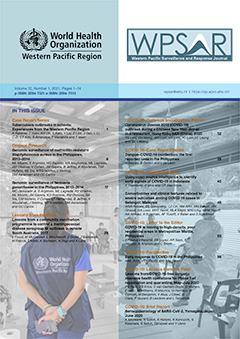Tuberculosis outbreaks in schools: Experiences from the Western Pacific Region
DOI:
https://doi.org/10.5365/wpsar.2020.11.3.005Abstract
Reports of tuberculosis (TB) outbreaks among schoolchildren have increased in recent years in countries across the Western Pacific Region. Cases from China, Japan, Mongolia and the Republic of Korea were studied to derive lessons from the challenges and responses to TB outbreaks in schools. Despite differences in the TB burden and outbreak preparedness, the four countries reported similar challenges. These included delayed diagnosis of index cases, lack of experienced health professionals and sustained financial support, and difficulty in responding to intensified media and community attention. Early detection of outbreaks, established resource mobilization networks, coordination among stakeholders and proactive communication were highlights of successful outbreak responses. These principles could be adapted to each context for responses to future TB outbreaks in schools.
References
Kerri Viney, Scientist, Prevention, Diagnosis, Treatment, Care and Innovation Unit, Global TB Programme, WHO, Geneva, Switzerland (vineyk@who.int)
Professor Ben J Marais, Infectious Diseases Clinician, The Children’s Hospital at Westmead, Co-Director, Marie Bashir Institute for Infectious Diseases and Biosecurity (MBI),
University of Sydney, Australia (ben.marais@health.nsw.gov.au)

